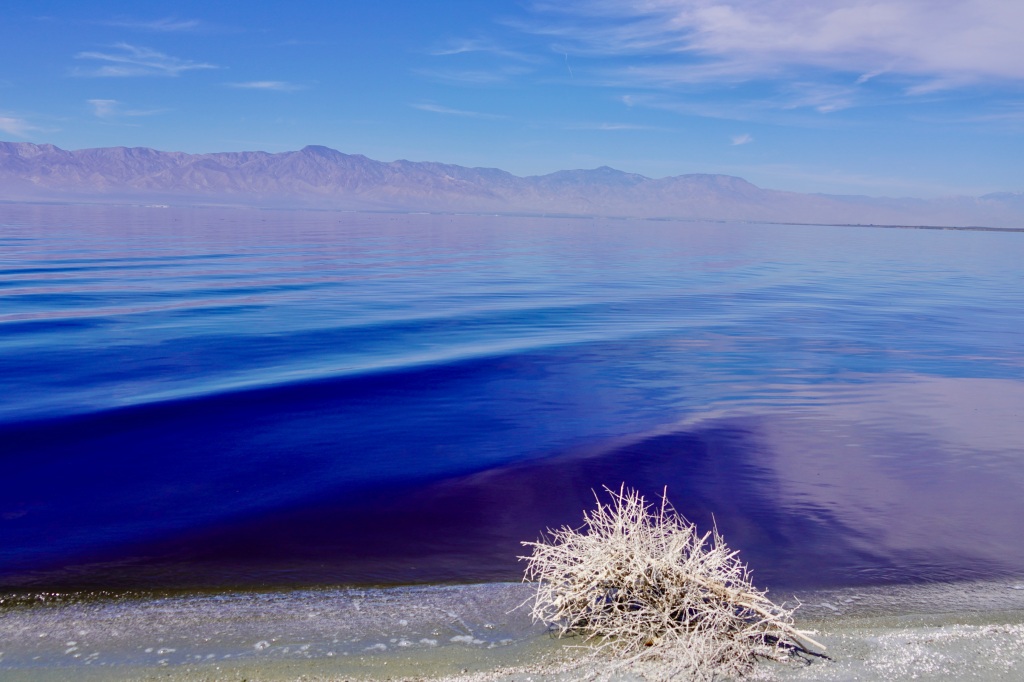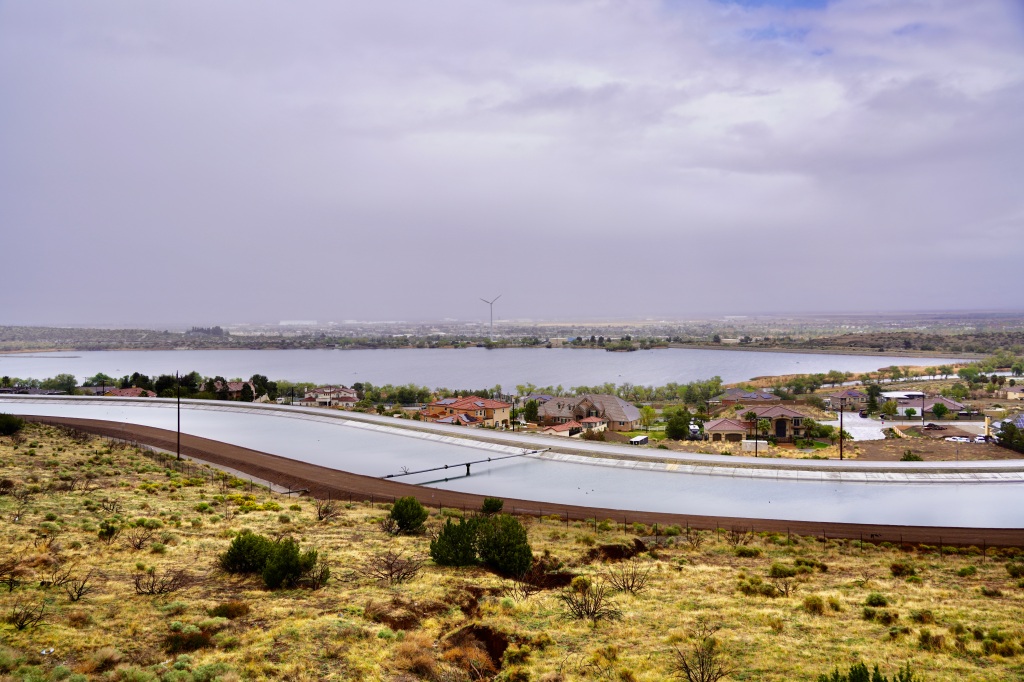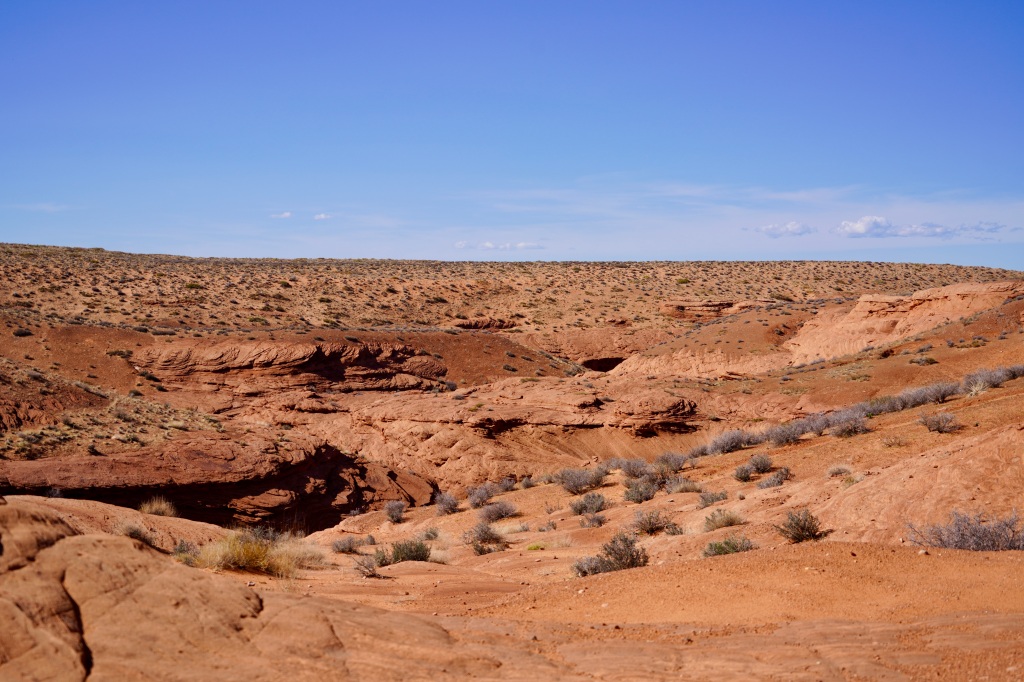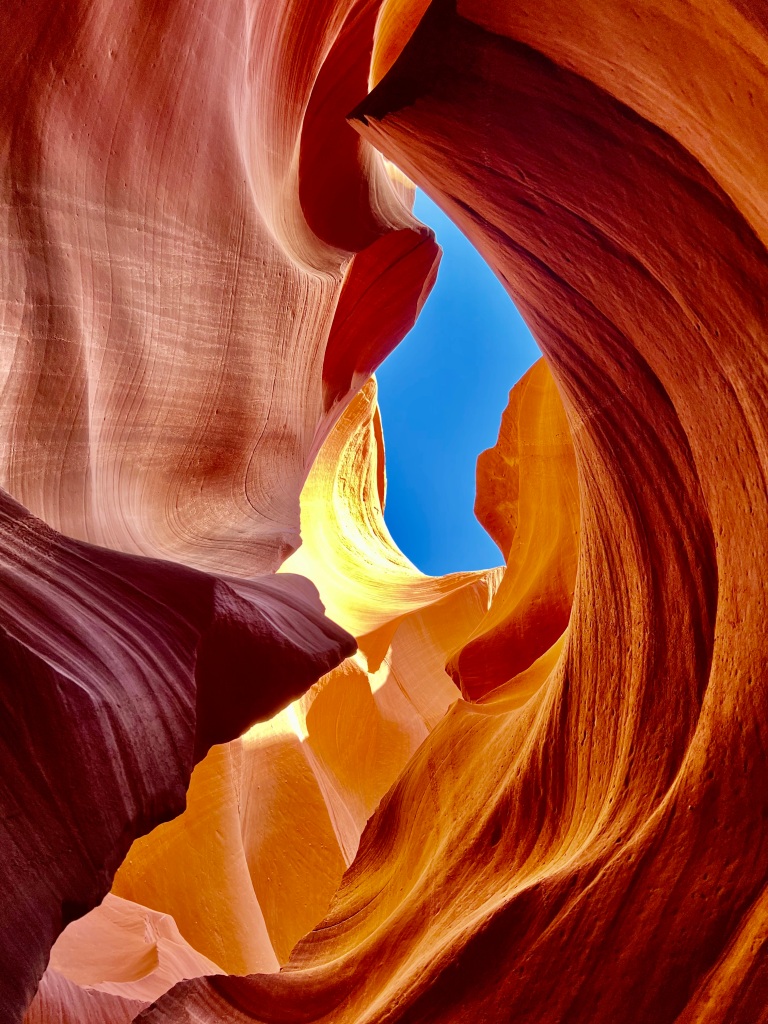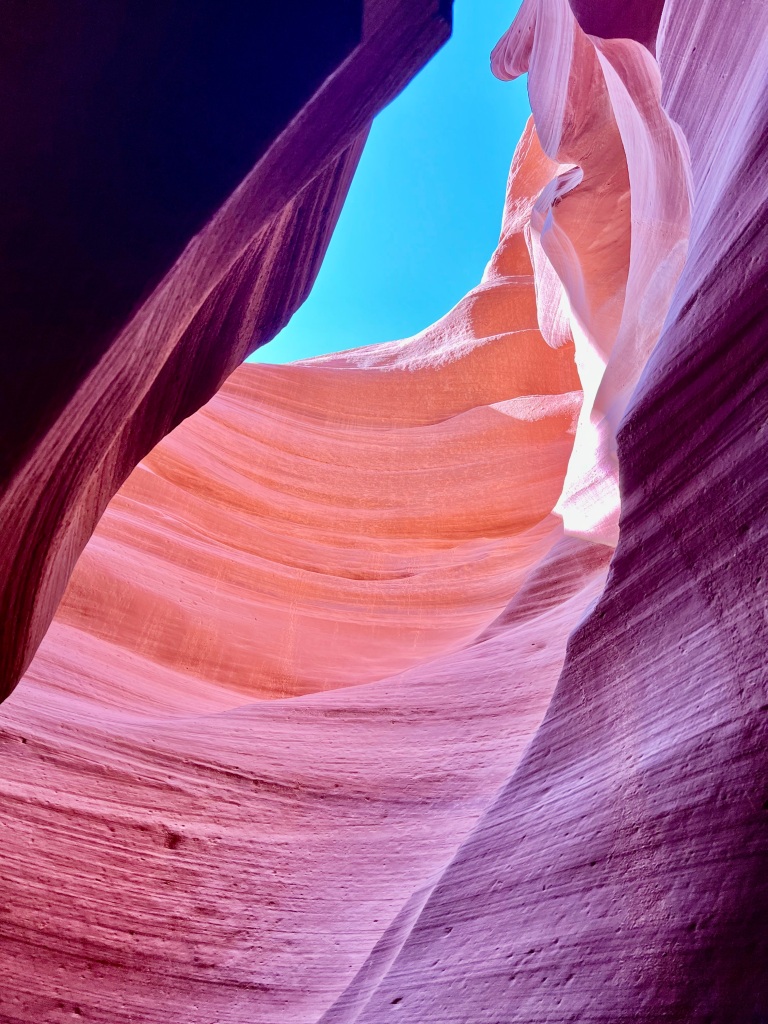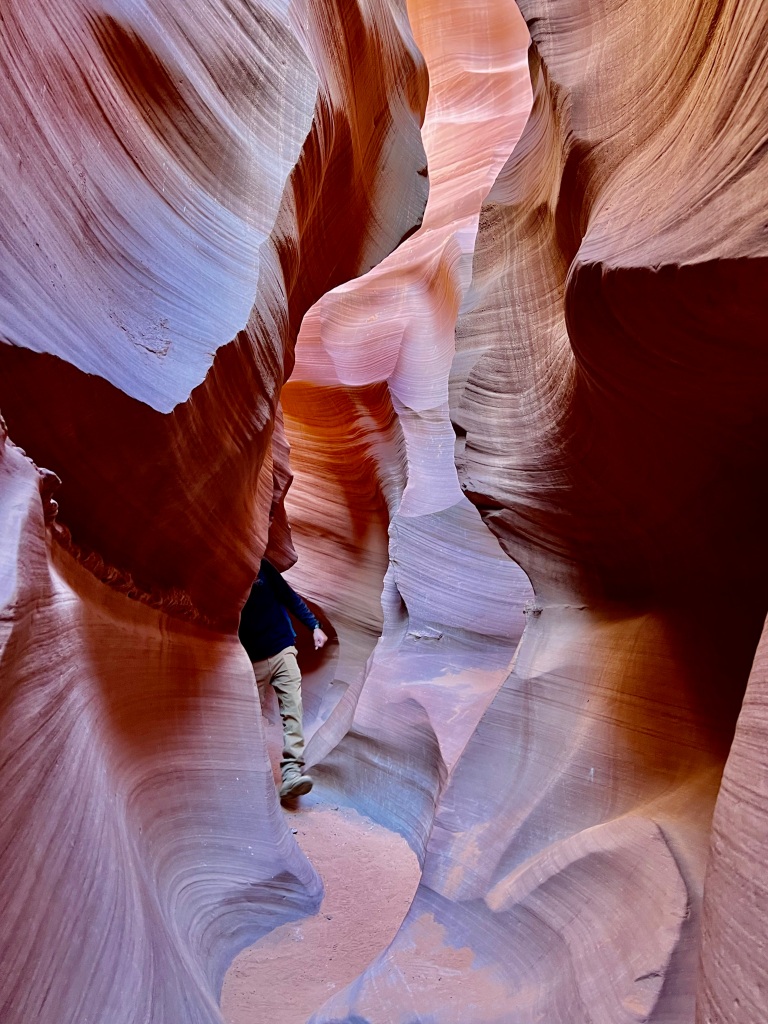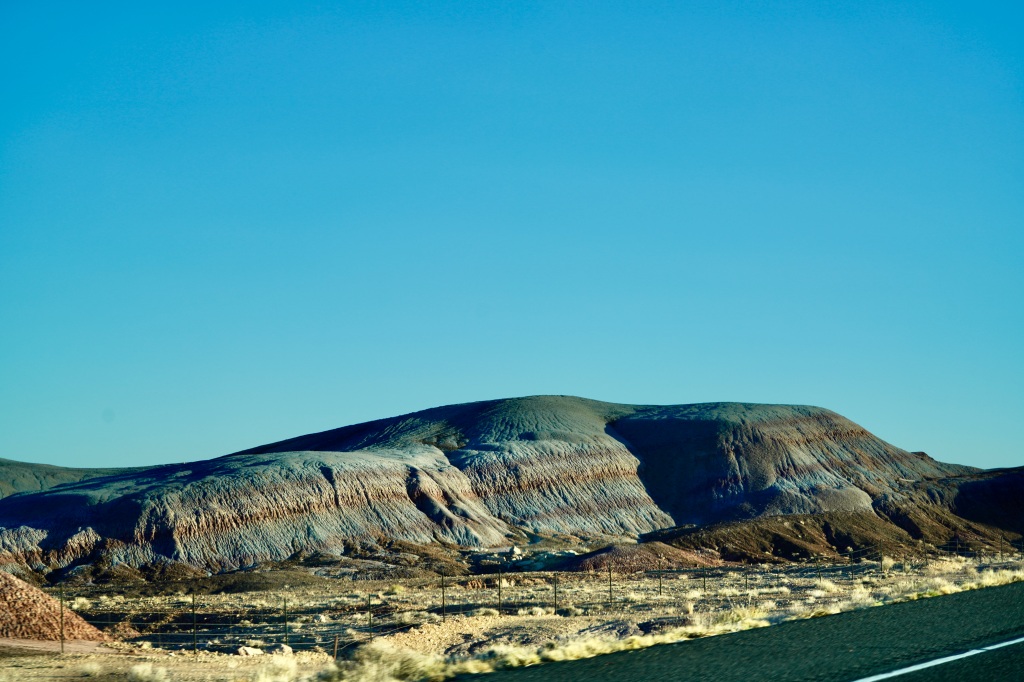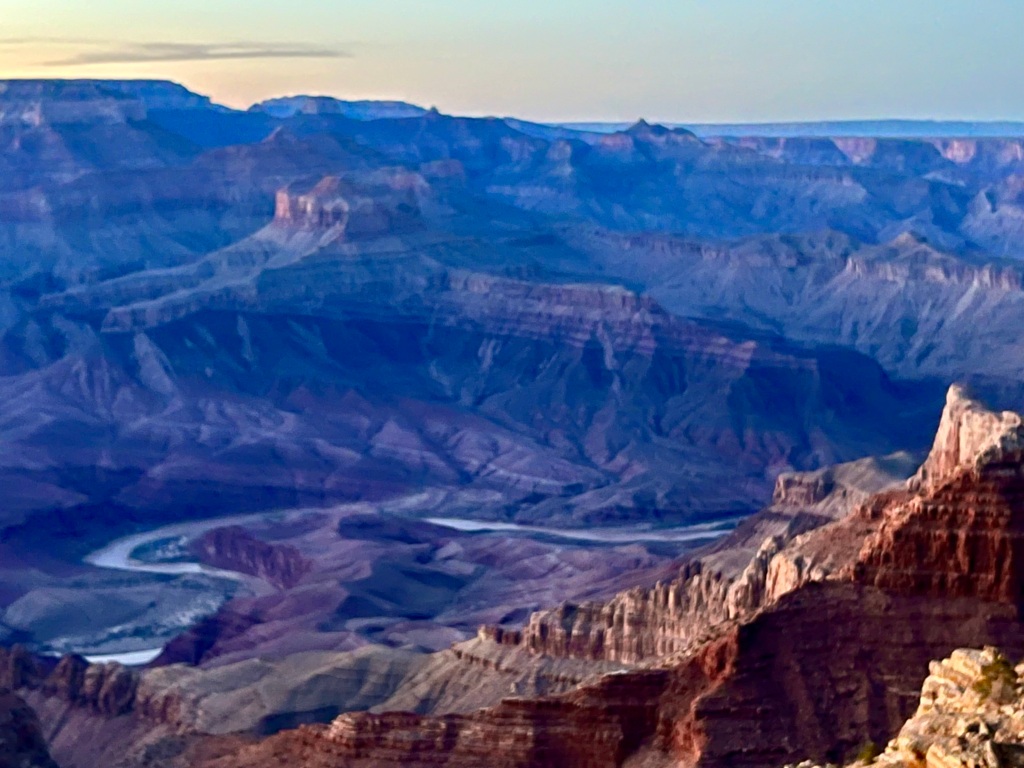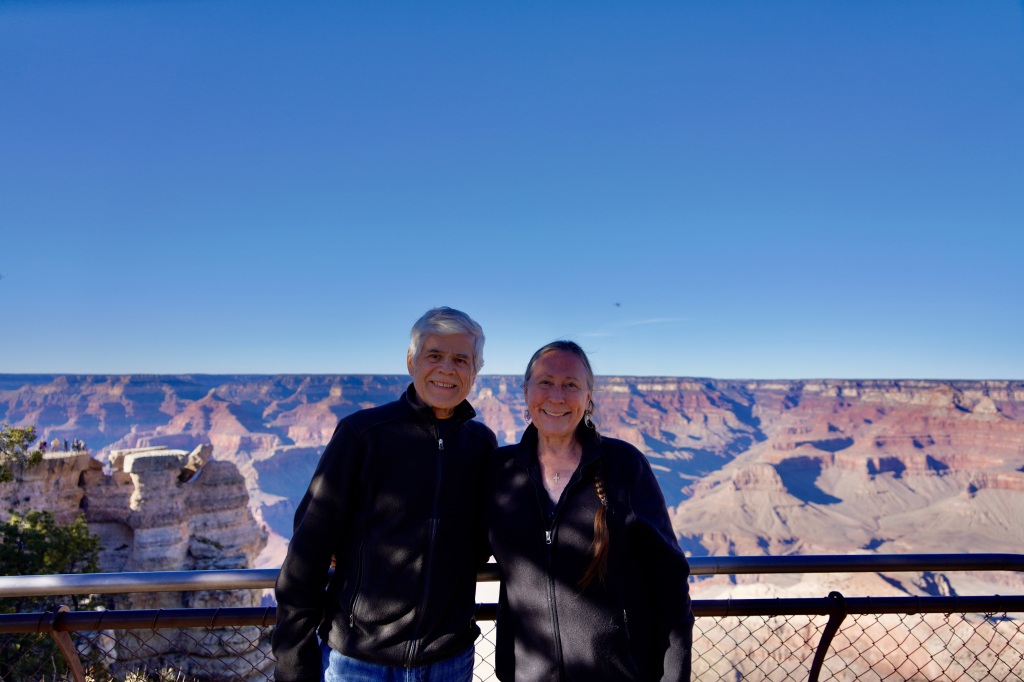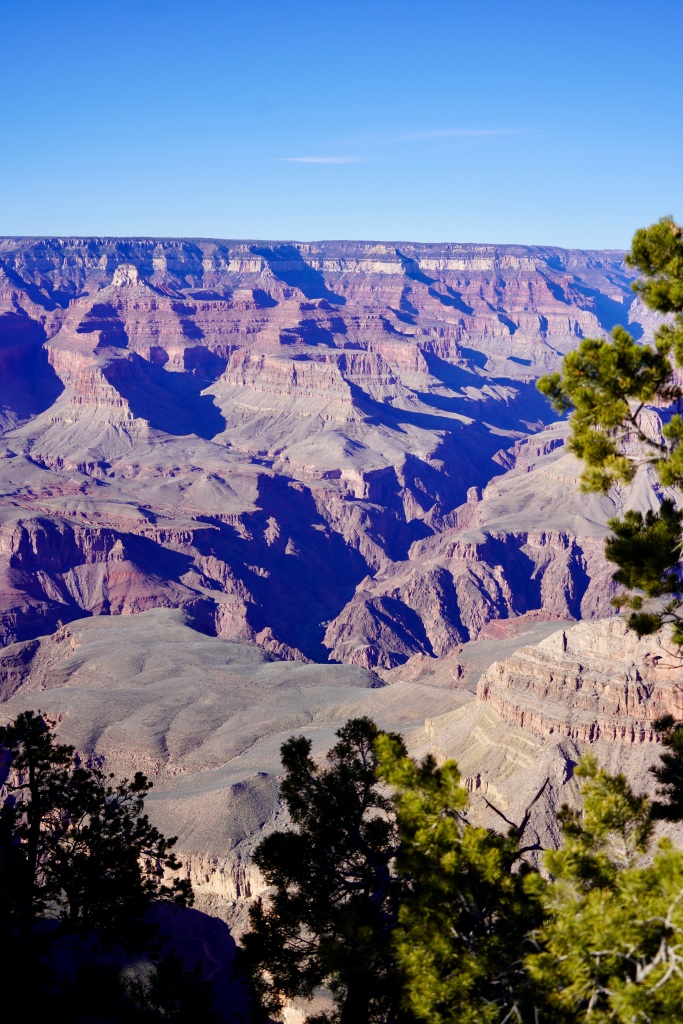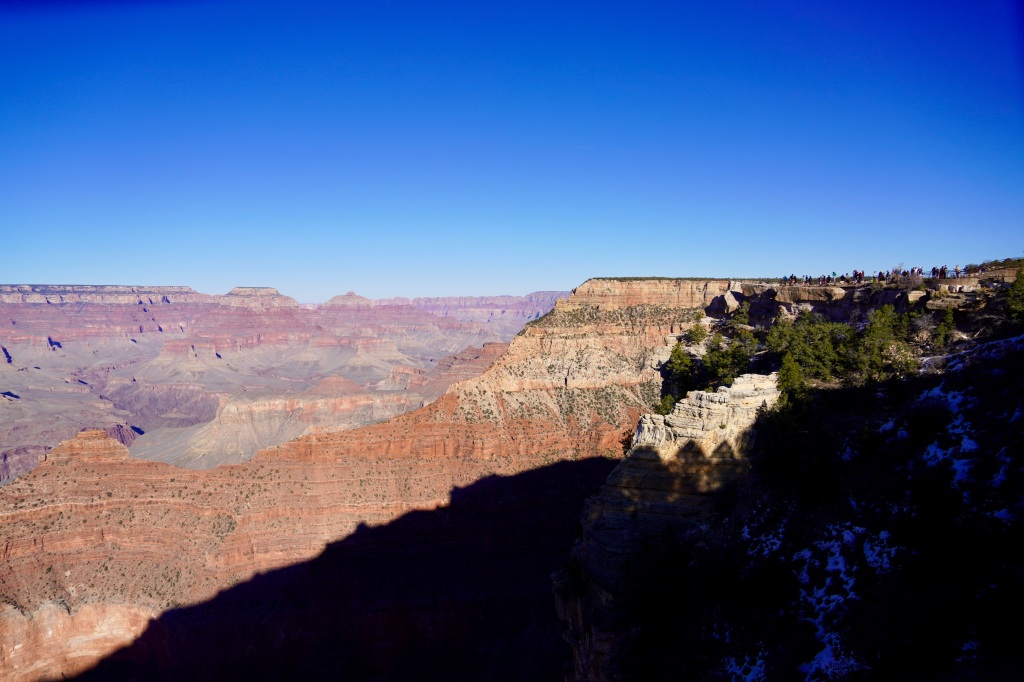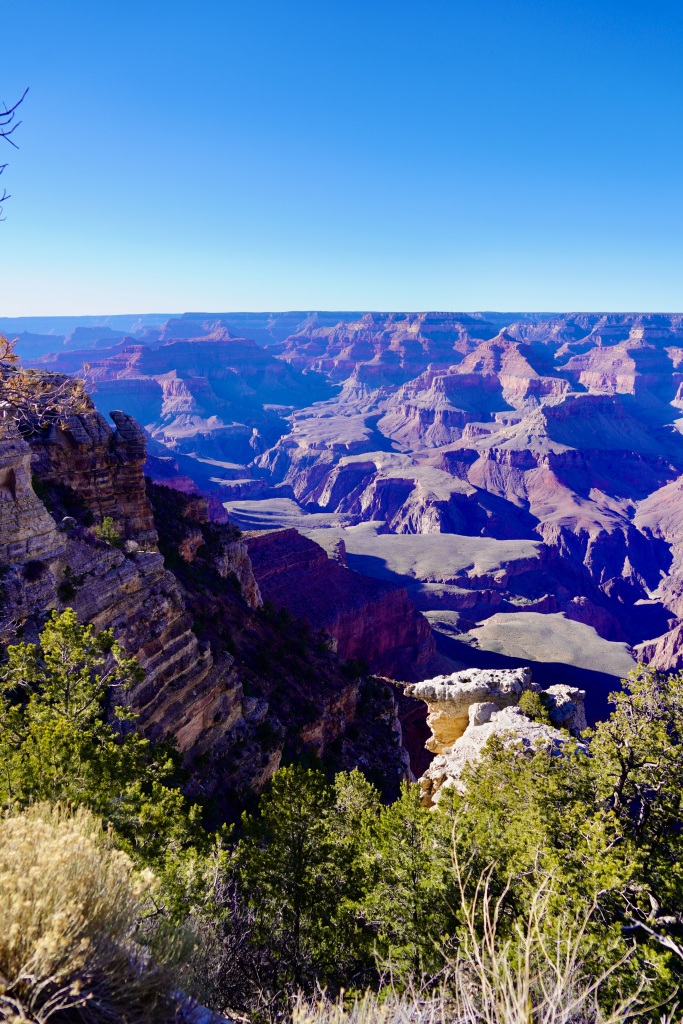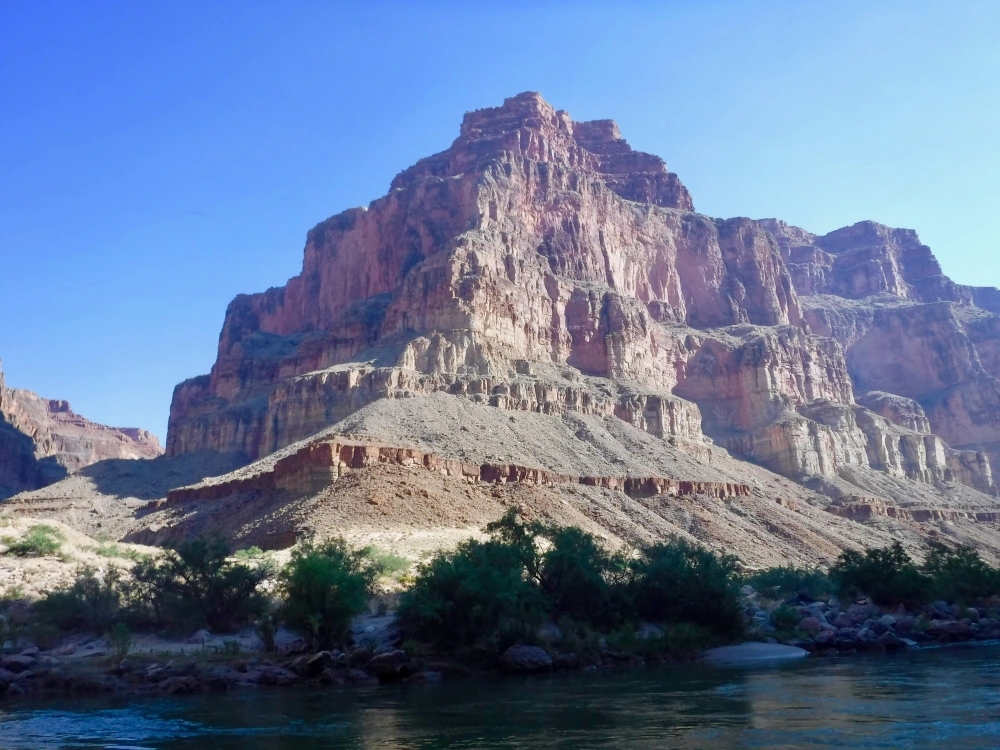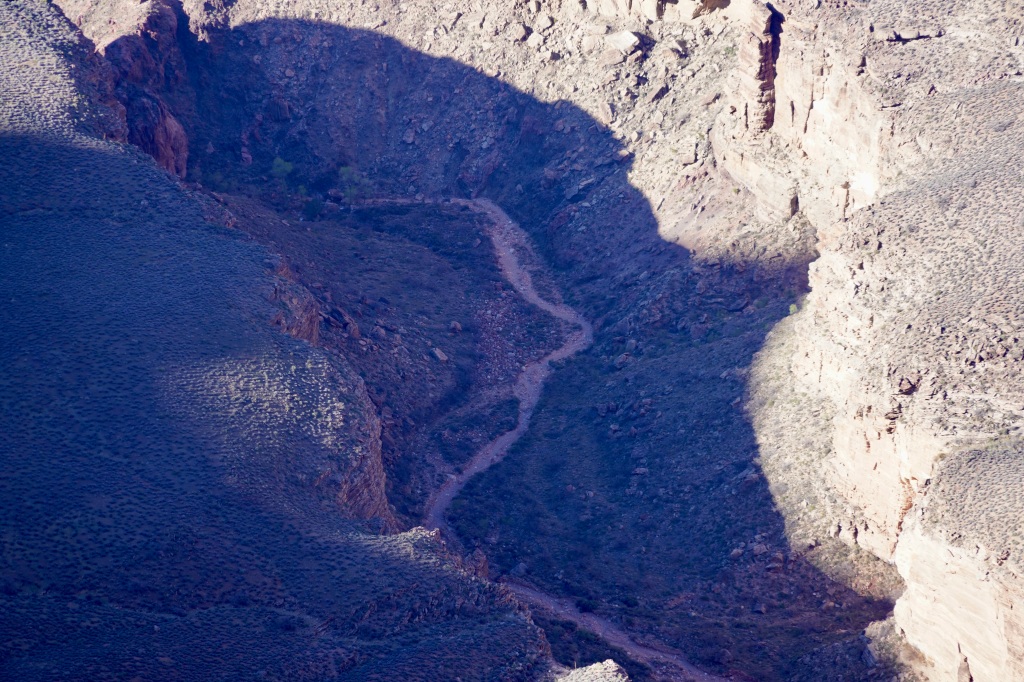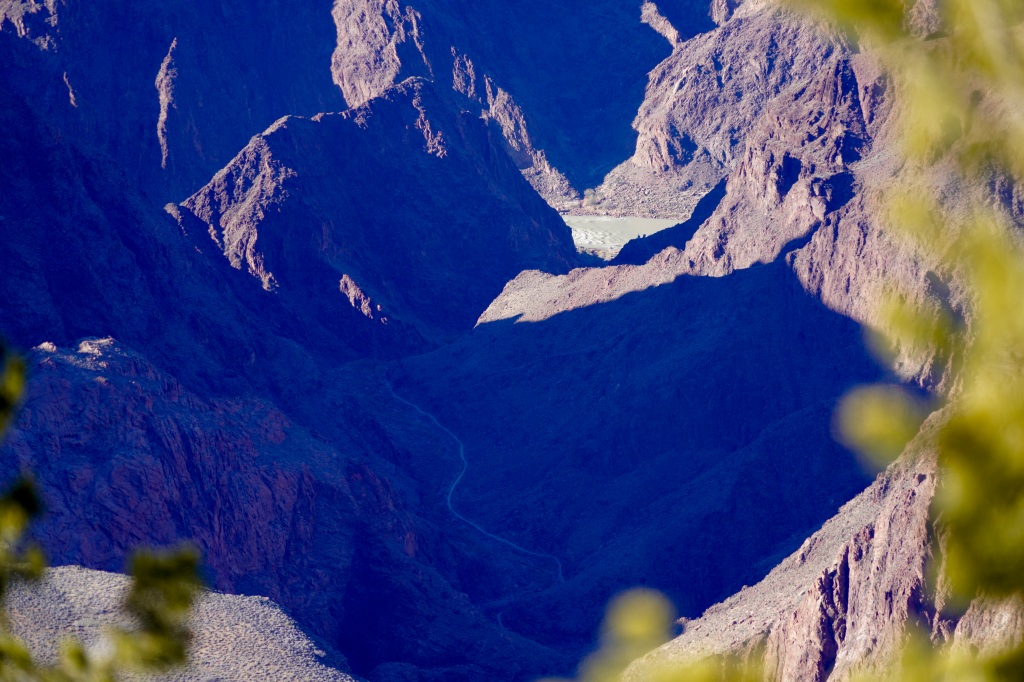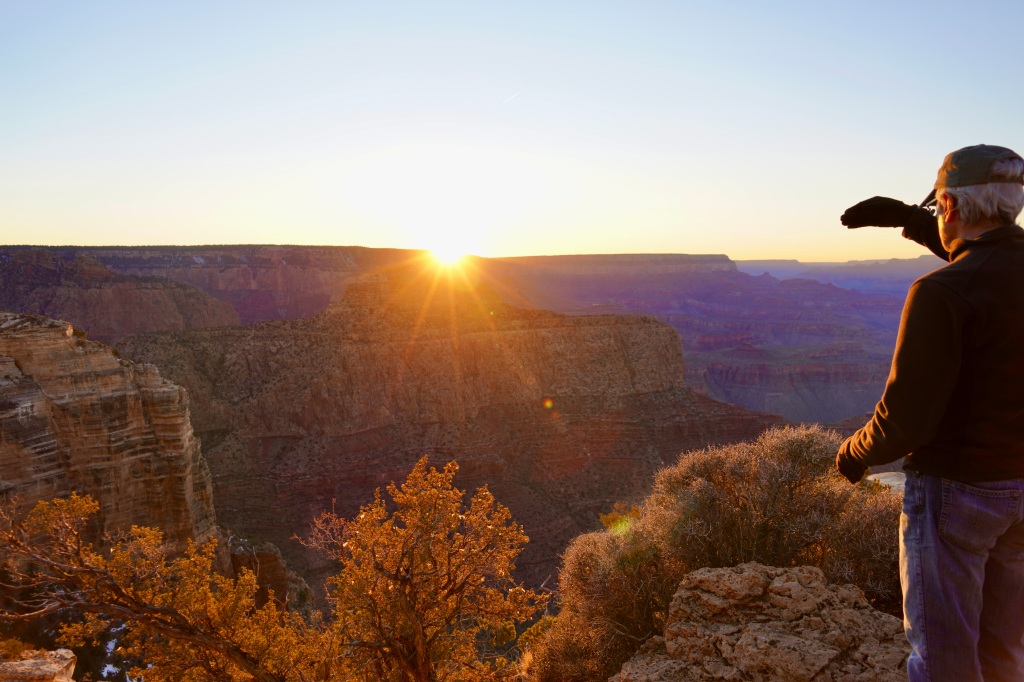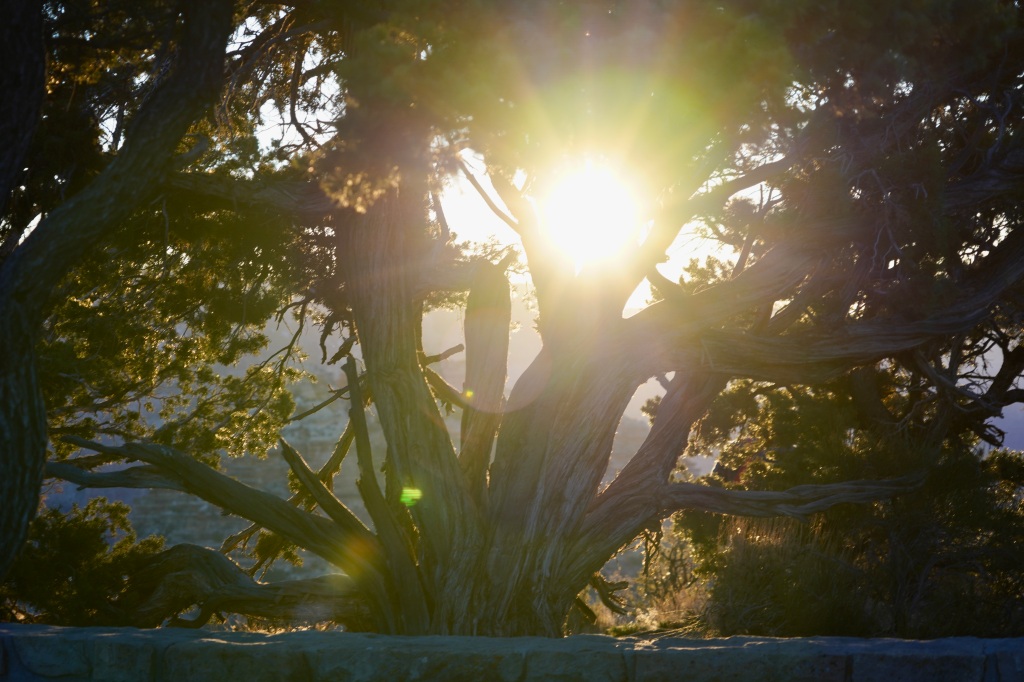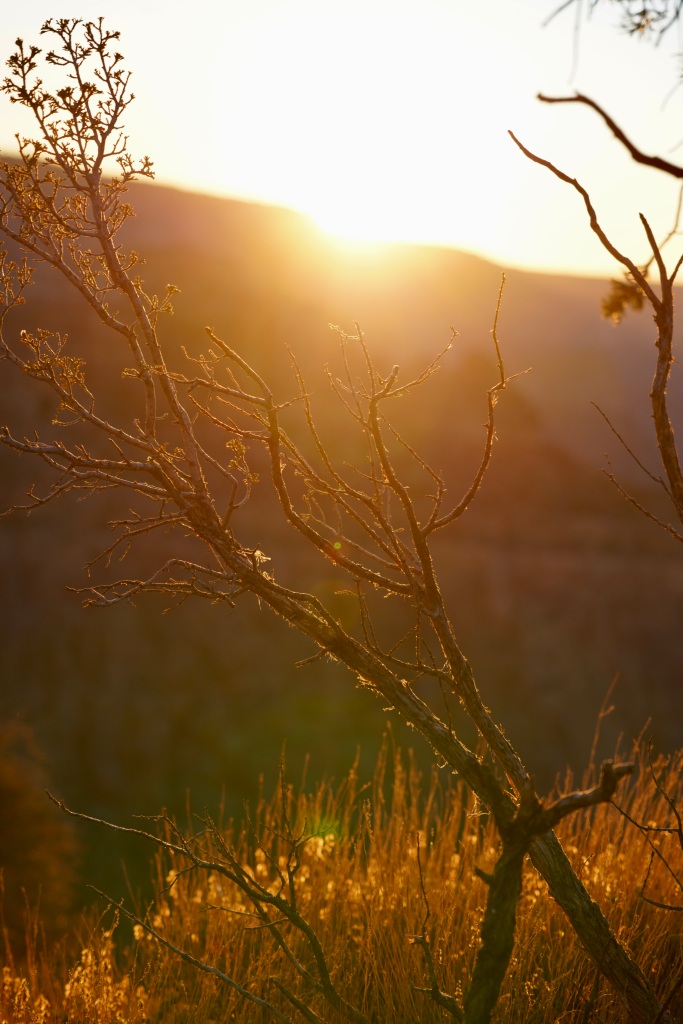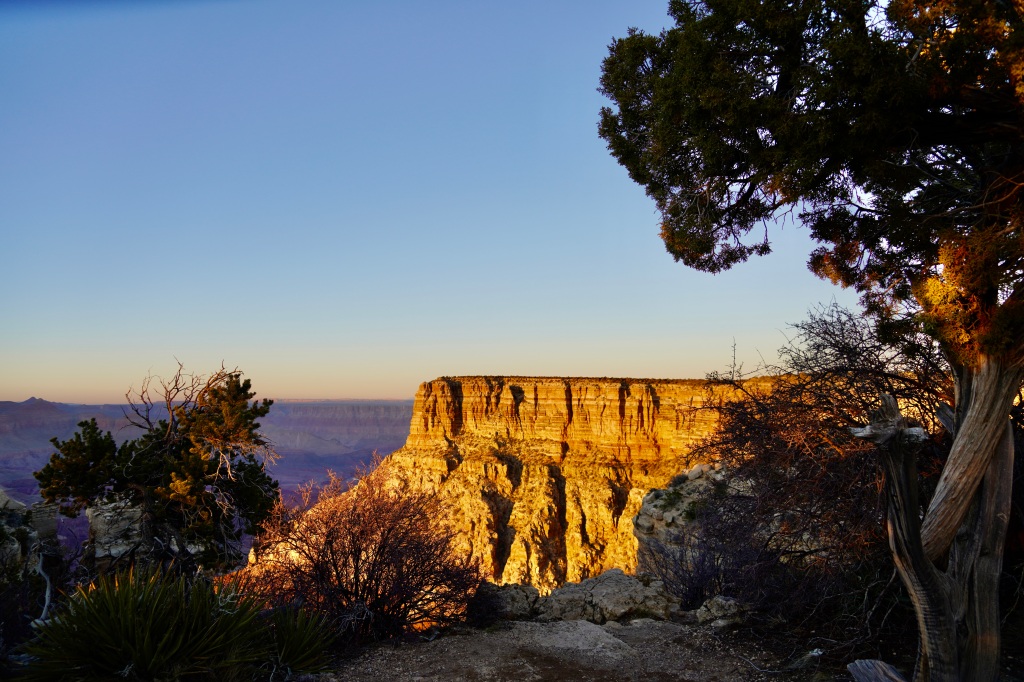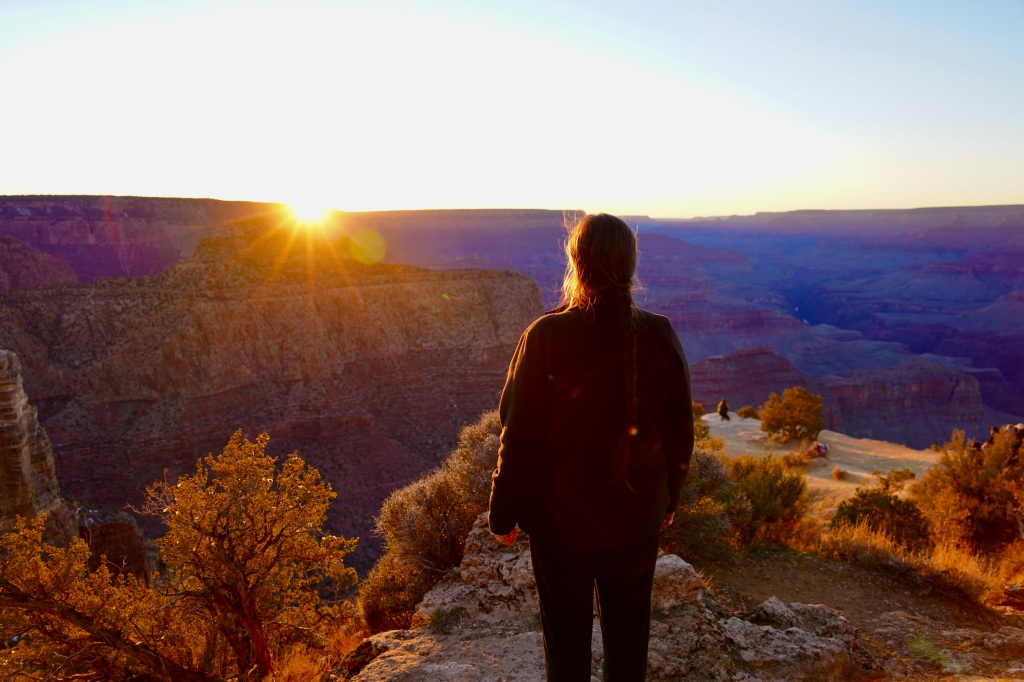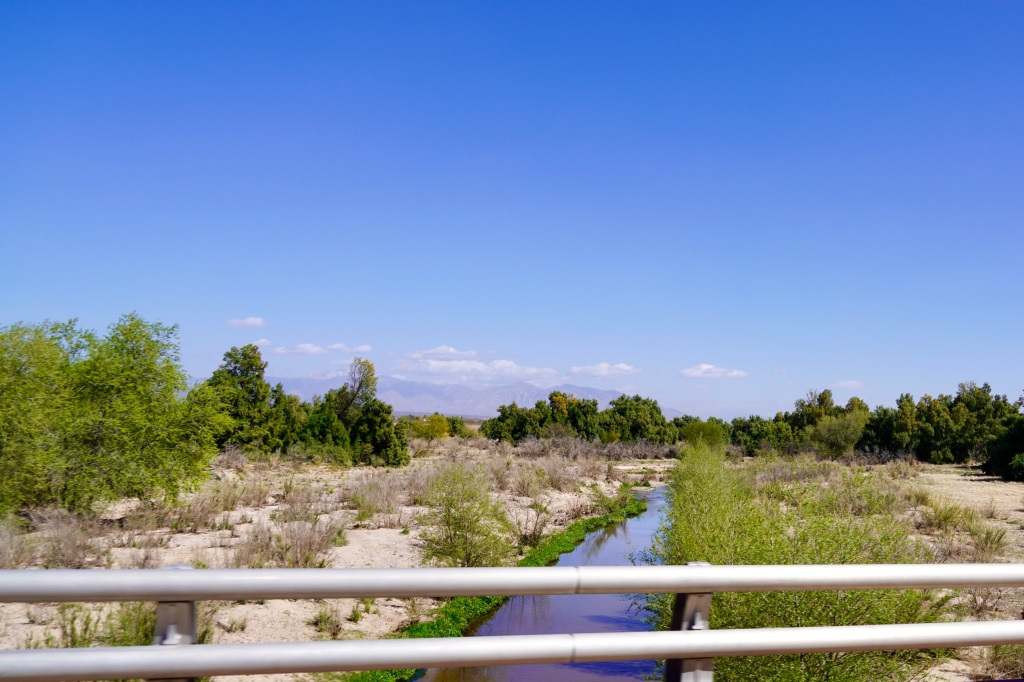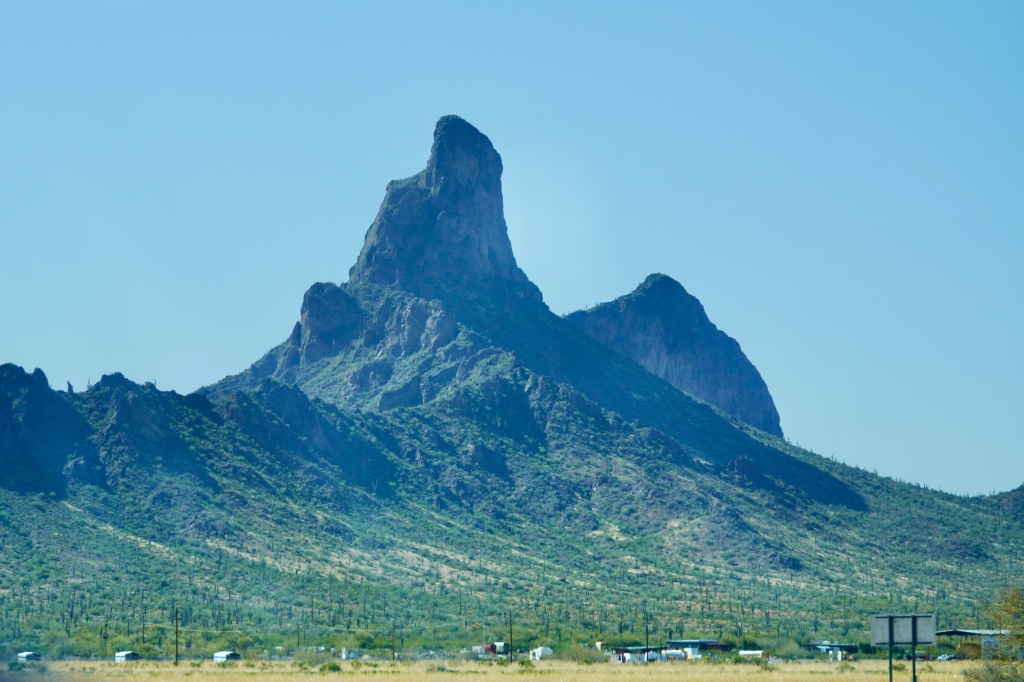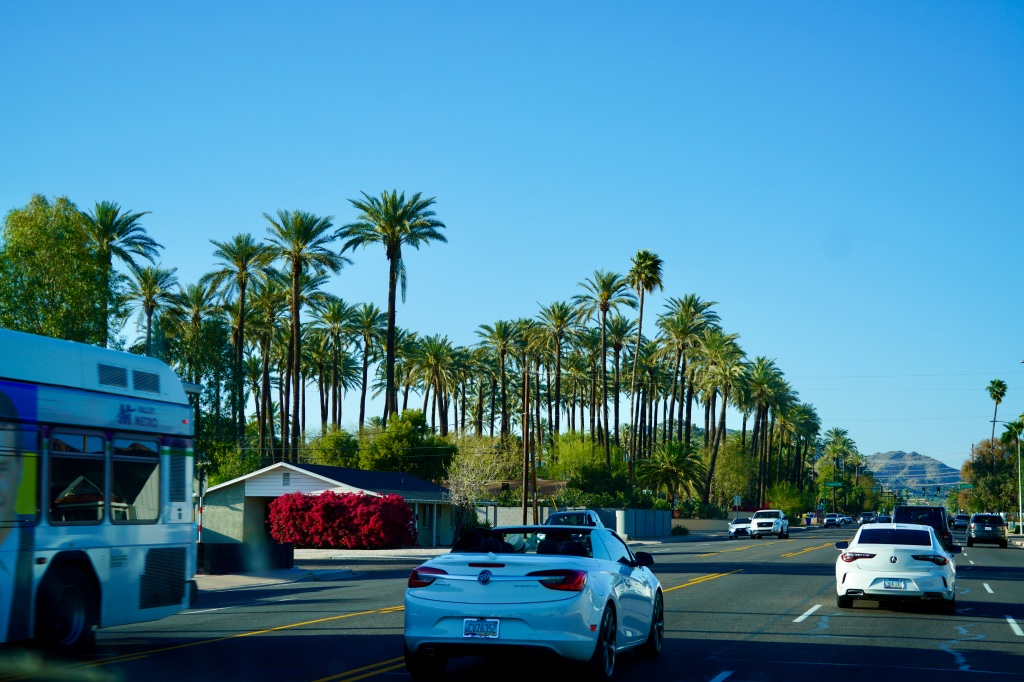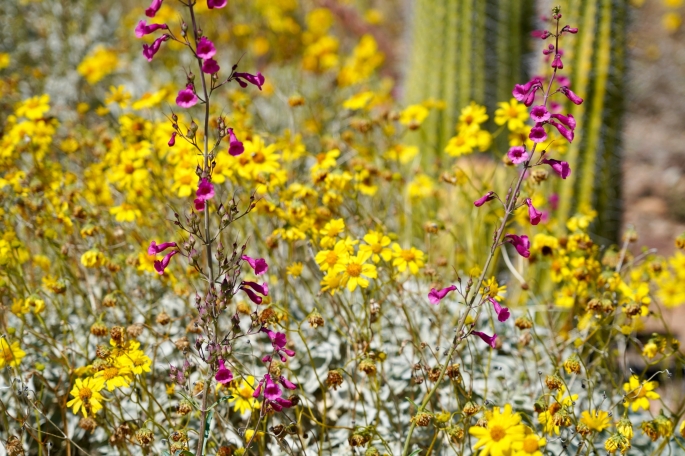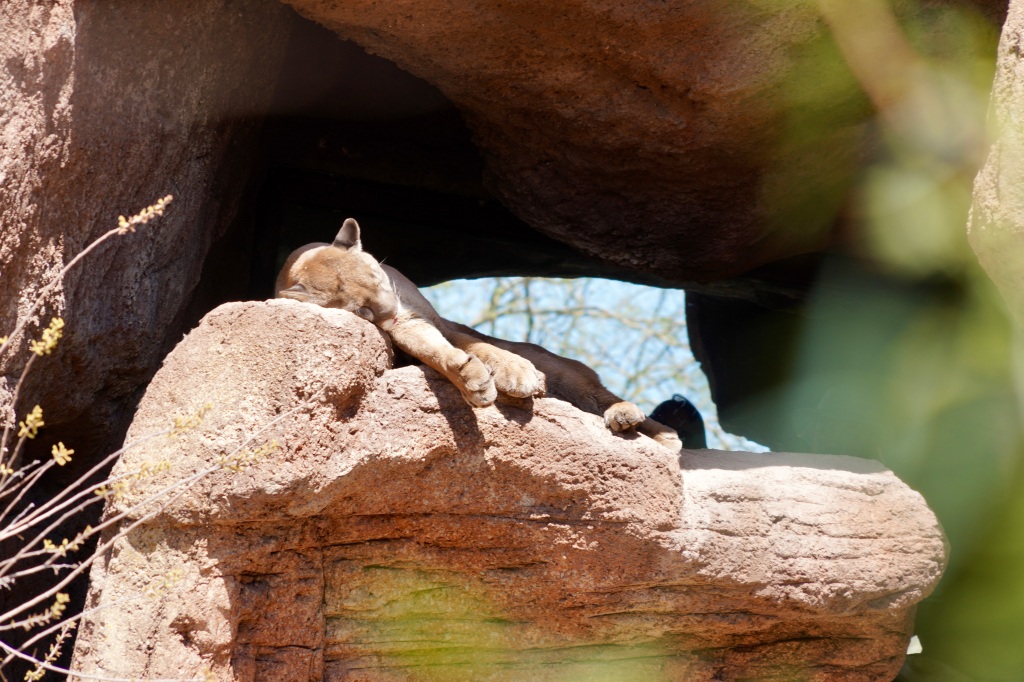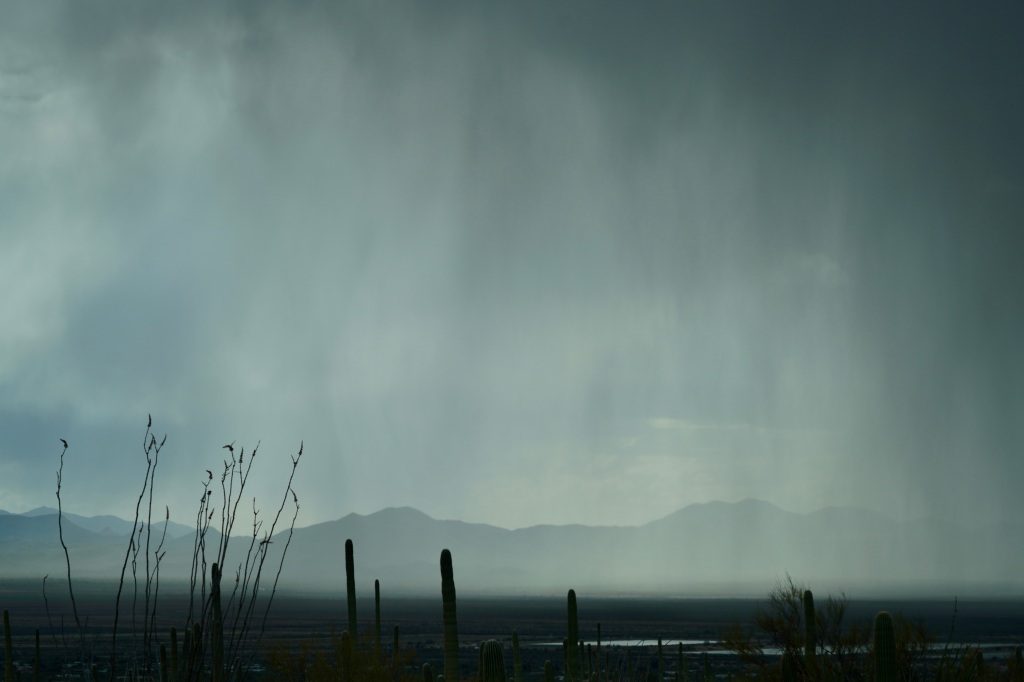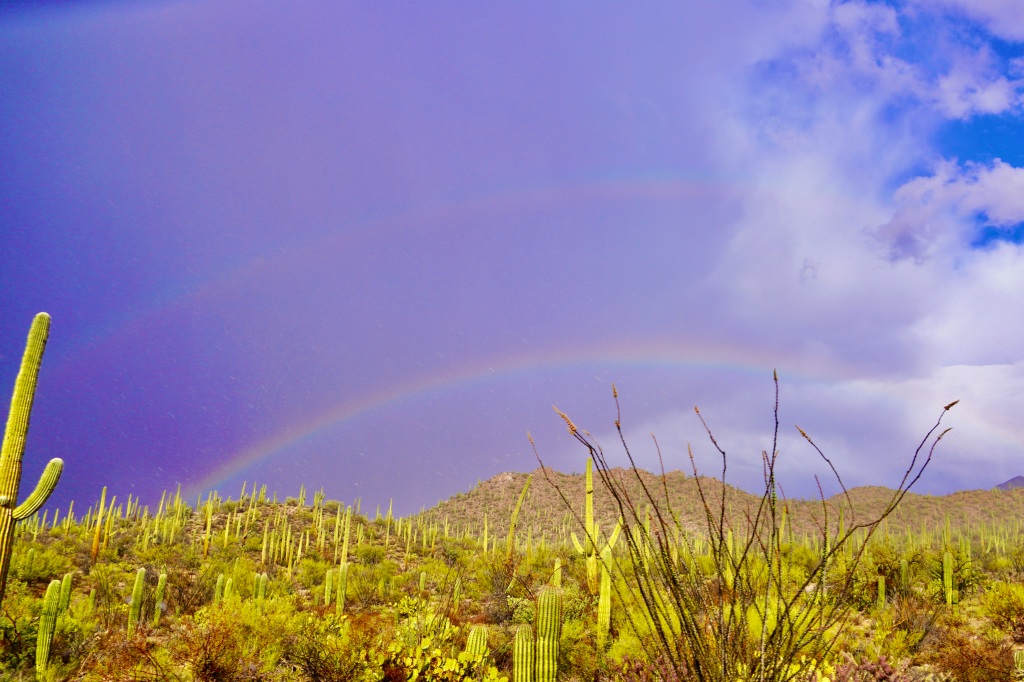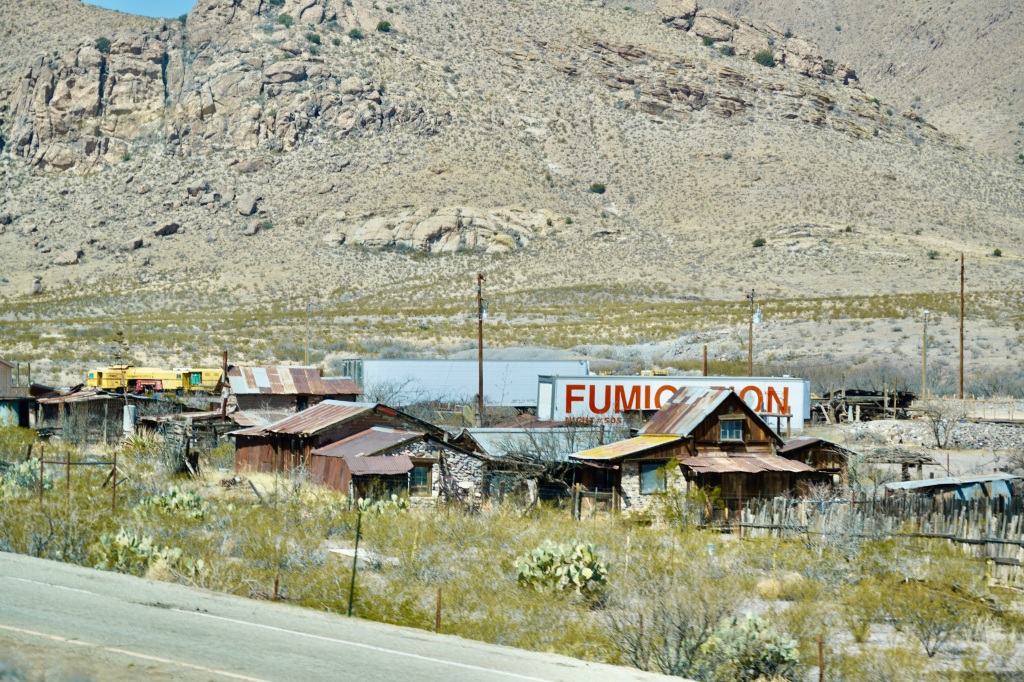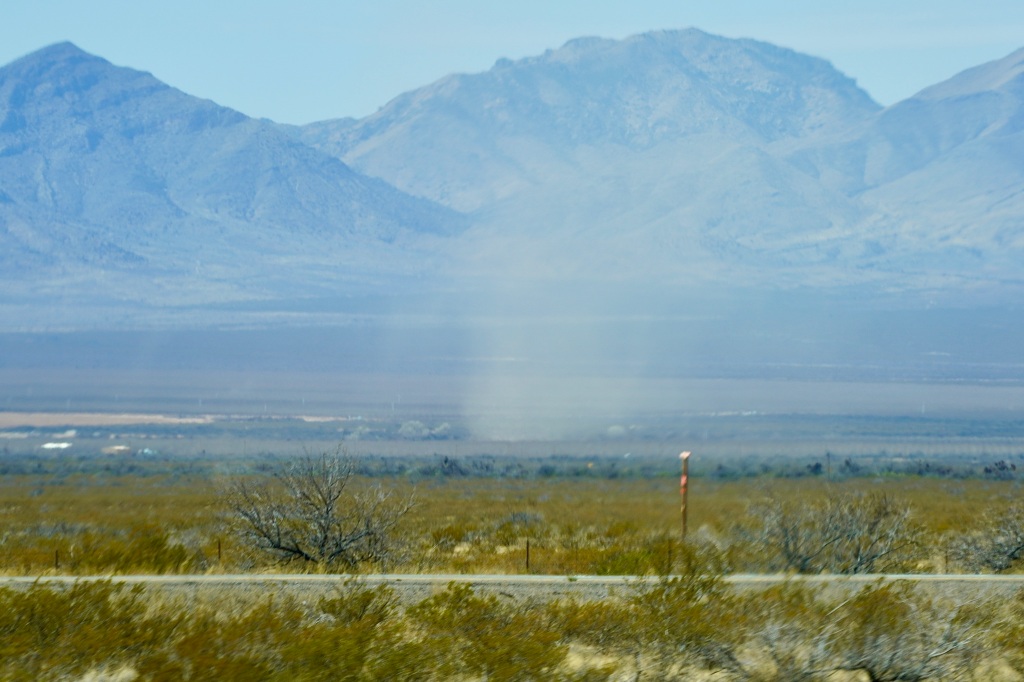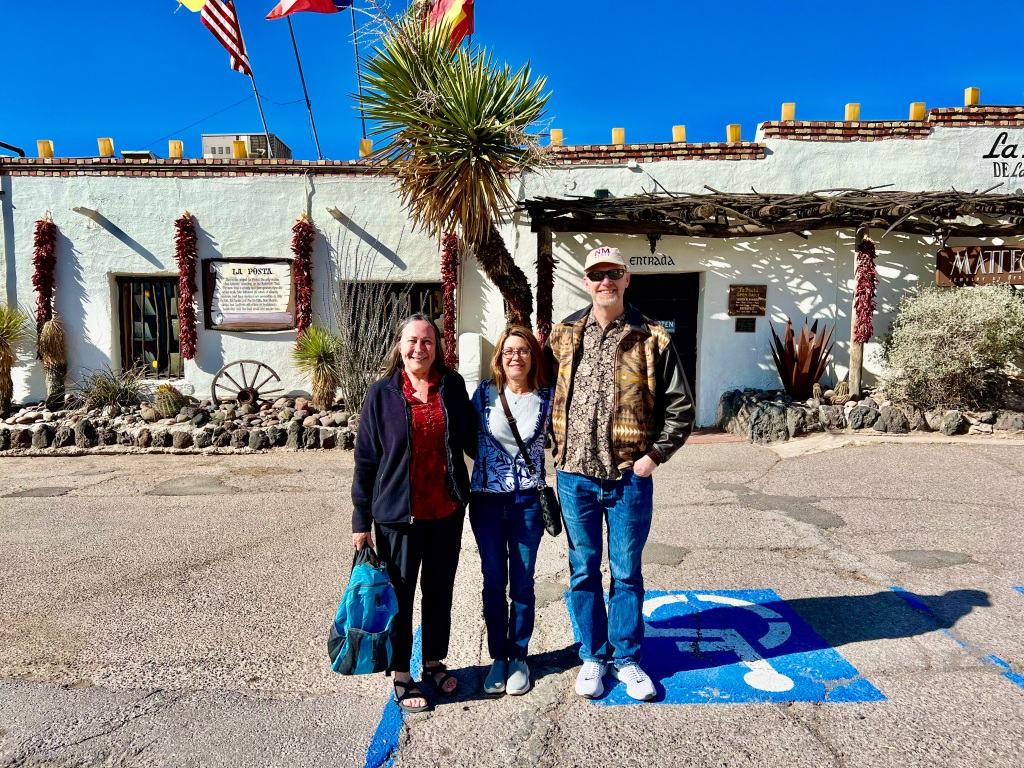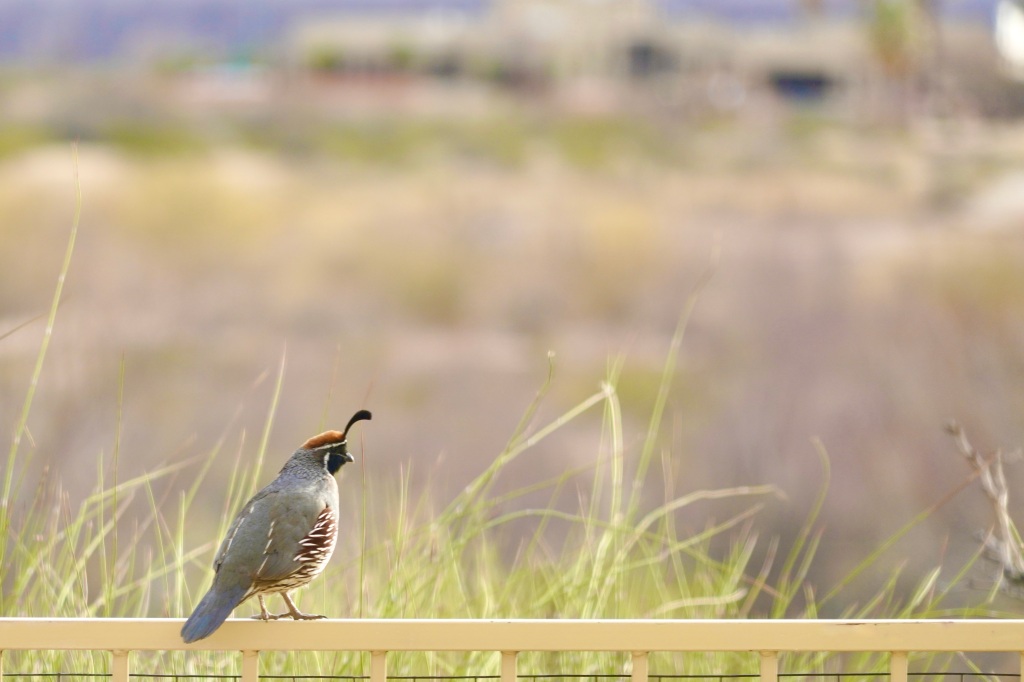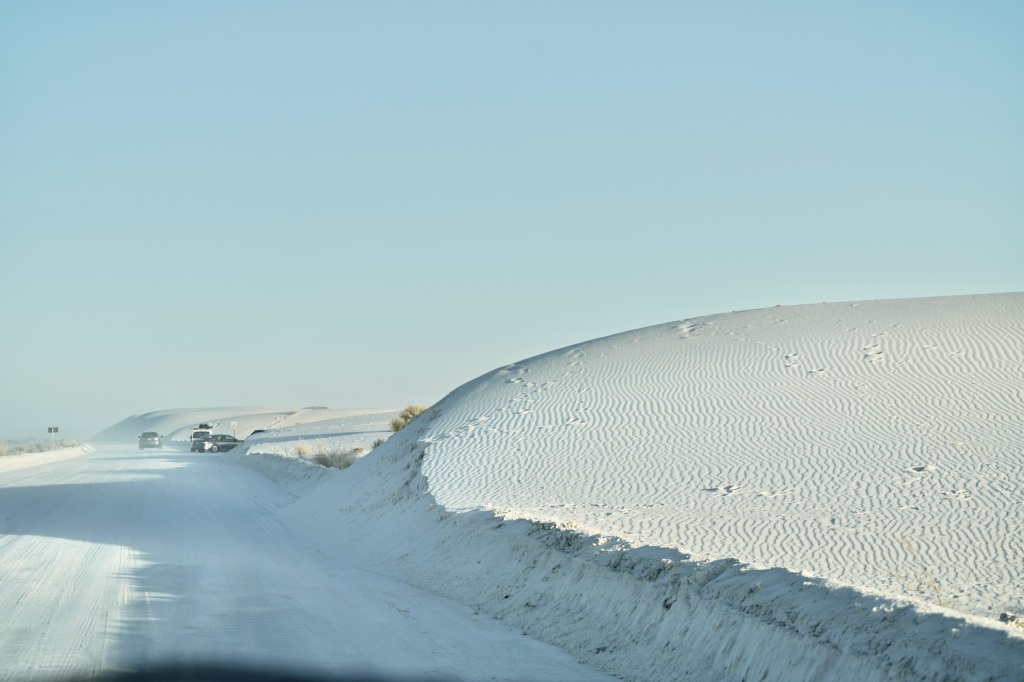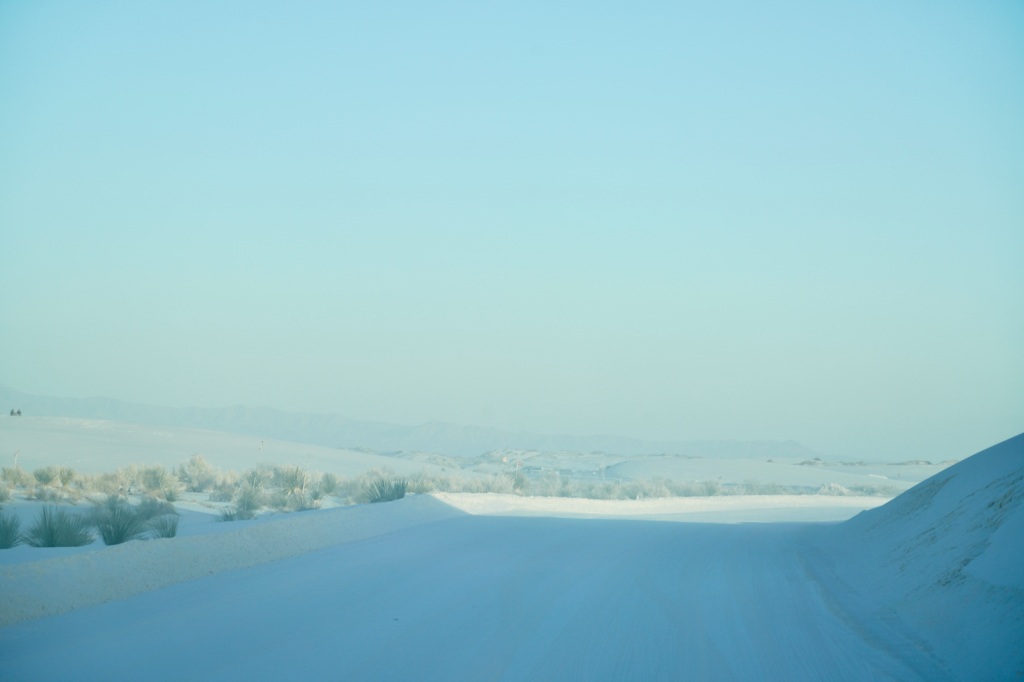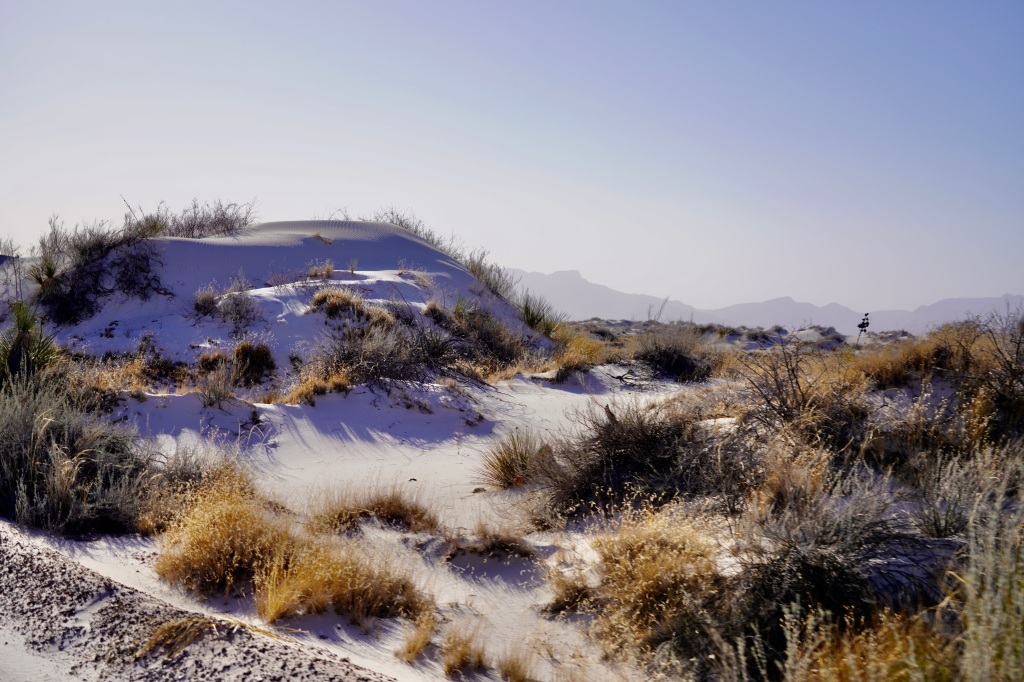
Our next stop was Joshua Tree National Park, where the Mojave and Colorado Deserts collide against a backdrop of the Little San Bernardino Mountains in southeast California.

Although it’s one of the newer parks and not well known, it encompasses over 1,200 square miles . . . an area slightly larger than the state of Rhode Island!

Joshua Tree National Park is named for the “Joshua Trees,” which according to undocumented legend was the name given by the Mormon settlers to these strange plants. As the story goes, the trees reminded the pioneers of the biblical Joshua, who lifted up his arms toward heaven for hours and hours, interceding to God so the Israelites could overcome their enemies and safely enter the Promised Land.

Although they grow to be as tall as some trees (nearly 50 feet) and are long-lived like trees (can live hundreds of years), Joshua trees are really a member of the Yucca family, Yucca brevifolia. They are most abundant in the Mojave Desert and thrive at elevations between 1,300 and 5,900 feet.

Joshua trees bloom in the spring, typically from late February to late April, and they were bursting with blooms while we were there. If you want to visit, I highly recommend April for maximum color and beauty!

Besides enjoying the Joshua trees, the park is famous for rock climbing, hiking, camping, and star gazing (since the night skies are usually clear and very dark).

We marveled at the unusual rock formations in the park, known as “inselbergs” (a loan word from German meaning “island mountains”).

They are composed from igneous rocks that have been weathered over ions of time and are now beautifully sculpted into soft contours and smooth boulders, often stacked in whimsical towers that seem to pop right out of the desert floor!

Alan and I took a drive along the main road through the park on a cool, sunshiny day and saw many hikers climbing the rocks.

We enjoy hiking—and used to scramble up rocks like mountain goats—but it occurred to us that at our age it would be pretty easy to slip and fall, so we mostly kept on level paths and resisted joining in the fun of rock climbing.

But, really, doesn’t this look tempting? Alan probably could have done just fine, but he makes wise decisions that keep us out of lots of trouble I’d likely get myself into!

As we traveled, I couldn’t help scanning the distant hills to see if I could find climbers, and they were there, mostly looking smaller than ants on anthills!

About halfway through our adventure, we heard a helicopter overhead.

Helicopters make so much noise I usually hear them before I see them! This one seemed to roar out of nowhere and suddenly passed right overhead.

Police were already on the scene and stopped the traffic just in front of us to make space for the helicopter to land.

Before long, a second helicopter came to to the site. We could tell we were not going to be going anywhere for a while, so we started looking around, trying to figure out what was going on and praying for whoever needed an airlift from “Mercy Air.”

After a while, I decided to take a walk along the road. I was delighted to see that what had seemed like barren earth as we sped by really hosted a number of tiny but beautiful flowering plants.

Talk about blooming with grace and blooming where you’re planted!

The things I miss when I’m looking off into the distance at all that’s impressive and famous while failing to admire the humble beauty right at my feet!

My dad (after he retired and got smarter about life) often used to say, “Don’t forget to stop and smell the flowers!”

That day we did. So many times it takes trouble to make us slow down, doesn’t it?

As a flower lover, I was thrilled to discover all the tiny treasures and signs of new life. Life and beauty abound even in parched places. God is so merciful!

After about a half an hour, we saw one of the helicopters lower a rescue worker with a stretcher, load someone on and take them back up to the safety of the craft. Within seconds, they roared away, doubtless to a hospital emergency room.

I never heard what happened, but I thought about how we humans can lift our hands to heaven, just like Joshua, and ask for help. I thought about how we humans are spiritually in need of rescue. We are never going to be able to climb to heaven on our own and will just get injured if we try. We can die trying or accept help from Jesus, who knows the way and explained, “I am the way, the truth, and the life: no man comes to the Father but by me” (John 14:6). I am eternally grateful that our merciful God sent Jesus down from heaven to rescue me . . . and “whosoever will.” Have you asked Jesus to rescue you?

“Oh, give thanks to the Lord, for He is good! . . . Who remembered us in our lowly state, For His mercy endures forever; And rescued us from our enemies” (Psalm 136:1, 23-24 NKJV).
“Let each of you look not only to his own interests, but also to the interests of others. Have this mind among yourselves, which is yours in Christ Jesus, who, though he was in the form of God, did not count equality with God a thing to be grasped, but emptied himself, by taking the form of a servant, being born in the likeness of men. And being found in human form, he humbled himself by becoming obedient to the point of death, even death on a cross. Therefore God has highly exalted him and bestowed on him the name that is above every name, so that at the name of Jesus every knee should bow, in heaven and on earth and under the earth, and every tongue confess that Jesus Christ is Lord, to the glory of God the Father” (Philippians 2:4-11, ESV).













